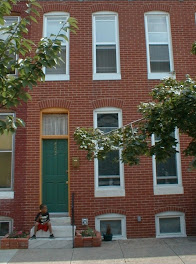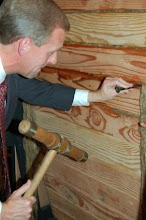By: Alicia Schuller, Marketing Coordinator, NHS of Baltimore
If you're an animal lover like me, you probably have one or several pets in your home, or you're thinking about bringing a new one home soon. Pets can be a wonderful and joyous addition to your home if the proper preparation is applied first. Without it, you could find yourself in a stressful situation that won't benefit you or your pet. As with small children, you constantly have to be aware of hazards and mischief your animal can get into. You have to see your home from their prospective. Here are a few tips to get you started.
1. Put away or secure breakables- your belongings are priceless to you, but to your pet, they are just another object. Whether you have a trapeze kitty who likes to walk on your dresser, shelves, counter or television console, or you have a hyper pup who likes to tear around the house as fast as he can, you need to be aware accidents happen. The best thing to do is to secure or put away those belongings which you could not stand to have broken. Next you should set boundaries with your pet and let them know where they are not allowed to go. This will save you a lot of headaches in the future.
2. Understand that your puppy will chew!- Young dogs inevitably love to chew on things. So you have two options- provide them with chew toys and bones, or let them chew your furniture and clothing. But giving them a toy is not enough. You should also keep all cords and clothing off the floor and don't leave them alone during the day in a room with furniture you don't want chewed.
3. Create a sheltered and safe place for them to sleep- when you train your pet to sleep in a space that is dedicated to them, they will be less likely to invade your sleep space at night.
4. Keep all medications and chemicals out of reach- once again as with small children, pets can get into get into things that can harm them. Be sure that all household chemicals are always secure in a cabinet or out of the reach of your pet. Furthermore, don't leave any medications laying around. Although their curiosity can be cute, it can also be deadly. The same rule may be applied to certain types of plants which may be hazardous to your little friend. Do some research on your plants prior to bringing the pet home. Find out if they could be poisonous.
5. Make sure your yard is secure and safe- if you have a dog and plan on leaving them in the yard while you're at work during the day, you definitely have to take some extra precautions. First, be sure that the yard is securely fenced in and there are no holes for your pet to escape through, or wires to cut them. Also be sure that you provide your pet with some sort of shelter to offer refuge against both heat and cold. Lastly, make sure they have plenty of water before you leave.
If you follow these simple tips, you will enjoy a lifetime of companionship and joy with your pet.
skip to main |
skip to sidebar
+for+blog.jpg)
.JPG)
.jpg)
Baltimore boy enjoys the day on his front step

.JPG)
Potential homeowners attend our Homebuyer Education Class
.JPG)
Executive Director, Felix Torres Colon accepts governor's committment to excellence award

Board Chair, Ron Huffman helps seal the foundation of homeownership
Helping you endure these trying times by offering vital tips and information about homeownership and financial fitness.
FACING FORECLOSURE?
We can help. NHS of Baltimore is one of the leading foreclosure prevention nonprofits in the Baltimore region. We offer HUD certified counseling, loan modification mediation and refinancing. Get help today! 410-327-1200
NHS of Baltimore Website
Take our Homebuyer Education Class Online!
+for+blog.jpg)
- Neighborhood Housing Services of Baltimore Inc.
- For more information on our homebuyer education classes, foreclosure prevention, or to donate, please visit our website or call, 410-327-1200.
Blog Archive
-
▼
2009
(98)
-
▼
August
(9)
- BGE Offers New Energy Efficiency Incentives for Lo...
- Right of Rescission a Little Known Treasure
- Time Running Out for the $8,000 Homebuyer Tax Credit
- First Time Homebuyers Seeking FHA Backed Mortgages
- Counselors Reaching More Struggling Homeowners tha...
- How Can You Make a Difference in Your Community an...
- NHS of Baltimore Preventing Foreclosure One Family...
- Press Release: What You Should Know About Reverse ...
- Making Your Home a Safe and Friendly Place for You...
-
▼
August
(9)
.jpg)
Baltimore boy enjoys the day on his front step

Potential homeowners attend our Homebuyer Education Class
Executive Director, Felix Torres Colon accepts governor's committment to excellence award
Board Chair, Ron Huffman helps seal the foundation of homeownership



